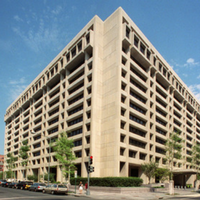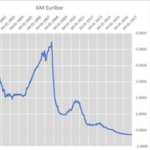What will be the new “normal” for interest rates?
| 23-01-2018 | Lionel Pavey |
 Despite interest rate being very low for the last few years, general consensus is that rates will eventually rise – rates will become more normal. Rates are being held down by the actions of central banks with their quantitative easing. As QE is scaled backed and stopped this should allow rates to rise from their current low levels. The big question is – how high will rates rise? The Euro is not yet 20 years old and that means that whilst there is a lot of data, it does not require looking through 50 or 60 years of data to try and find the norm.
Despite interest rate being very low for the last few years, general consensus is that rates will eventually rise – rates will become more normal. Rates are being held down by the actions of central banks with their quantitative easing. As QE is scaled backed and stopped this should allow rates to rise from their current low levels. The big question is – how high will rates rise? The Euro is not yet 20 years old and that means that whilst there is a lot of data, it does not require looking through 50 or 60 years of data to try and find the norm.
From a high of just over 5% in the summer of 2008, 10 year swap rates have fallen to a low of around 0.25% in the autumn of 2016 and are currently just under 1%. Historically, it has been usual to describe prices as moving back to around the average. However, having just under 20 years of data, it is possible to analyse the average fairly quickly.
The average rate for 10 year swaps for the last year is about 0.80%
The average rate for 10 year swaps for the last 2 years is about 0.70%
The average rate for 10 years swaps for the last 5 years is about 1.15%
The average rate for 10 year swap for the last 10 years is about 2.20%
And the average since 1999 when the Euro started is about 3.40%
The lowest rate was about 0.25% in 2016
The highest rate was about 6% in 2000
What is normal? From a personal point of view when I took out my first mortgage (back in the previous millennium) the advice I was given was that if long term fixed rates (10 years) were lower than 6.5% I should look to lock into that rate as the long term average was 7%. With every other property that I subsequently bought the long term fixed rates were lower than with my first mortgage. Currently mortgage rates for 10 year fixed are around 1.75%. Long term interest rates have been steadily falling for the last 30 – 35 years.
So, when we talk about rates eventually rising, we are still left with the problem that previous benchmarks – which were normal then – may not be applicable anymore.
A rate raise is absolute – the magnitude and its impact will be relative to our perception of the new “normal” benchmark.

Cash Management and Treasury Specialist









